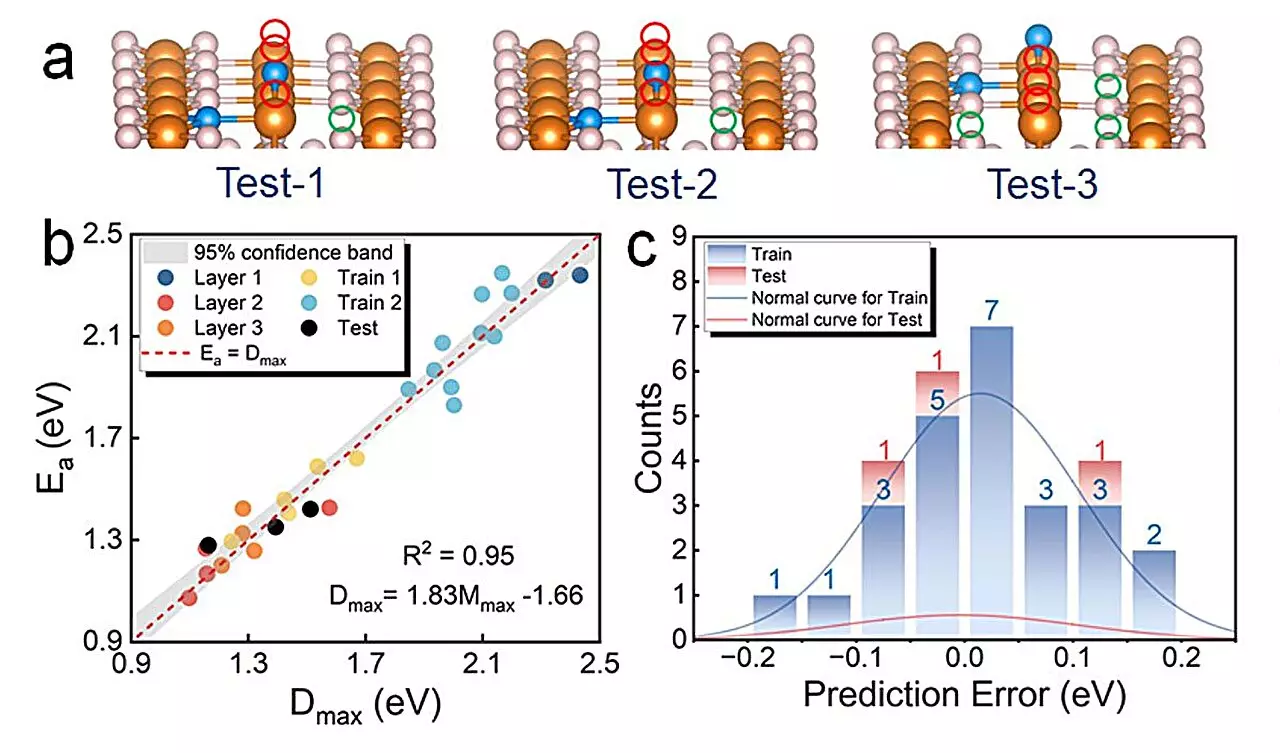In the realm of sustainable energy solutions, hydrogen storage technologies play a pivotal role. With the potential to be produced from renewable sources, hydrogen is recognized for its versatility and clean energy attributes. Among the solid-state hydrogen storage materials, magnesium hydride (MgH2) stands out for its high storage capacity and resource abundance. However, despite decades of research, the material properties of MgH2 have not yet met the performance targets set by the US Department of Energy (US-DOE).
One of the primary challenges in solid-state hydrogen storage lies in understanding the fundamental principles of dehydrogenation reactions. Current assessment methods rely heavily on dehydrogenation enthalpy and energy barriers, with the latter being particularly intricate and computationally intensive to calculate. Traditional transition state search techniques, while refined, are costly and time-consuming, impeding the pace of discovery and optimization in this field.
A research team has introduced a data-driven model to predict the dehydrogenation barriers of magnesium hydride. This model utilizes easily computable parameters such as the crystal Hamilton population orbital of the Mg–H bond and the distance between atomic hydrogen atoms. By establishing a distance-energy ratio, the model captures the critical chemistry of the reaction kinetics with substantially lower computational requirements compared to conventional methods.
The predictive power of the model was validated against experimental measurements, showcasing excellent agreement. This breakthrough not only brings magnesium hydride closer to the US-DOE targets but also paves the way for broader applications in other metal hydrides. The flexibility of the model’s variables allows for rapid recalibration to different metal hydrides, facilitating the exploration of new composite materials and innovative solid-state hydrogen storage solutions.
The researchers aim to extend the model’s application beyond magnesium-based materials, opening doors to a realm of possibilities in hydrogen storage technology. By adapting the model to various metal hydrides, the exploration and optimization of hydrogen storage materials can be expedited, ushering in cleaner and more efficient energy systems. This data-driven approach not only bridges the gap left by traditional experimental techniques but also accelerates the development of high-performance hydrogen storage solutions.
The development of a data-driven model for predicting dehydrogenation barriers marks a significant advancement in the field of solid-state hydrogen storage. With its ability to enhance performance, accelerate development, and pave the way for broader applications, this model represents a crucial step towards achieving sustainable and efficient energy systems. By leveraging easily computable parameters and advanced predictive capabilities, researchers are pushing the boundaries of innovation in hydrogen storage technologies.


Leave a Reply